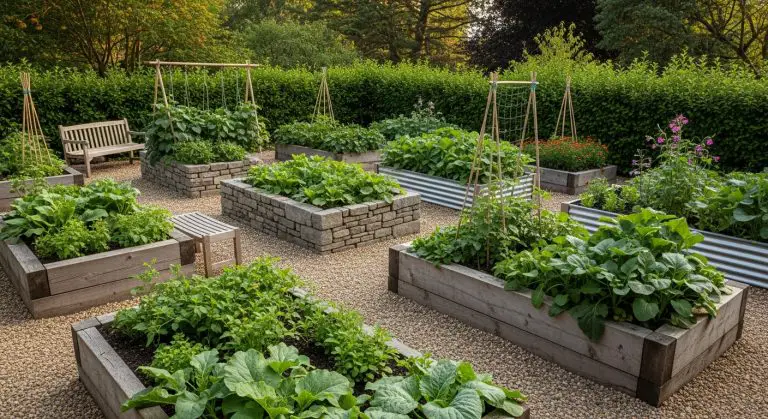Restaurant Garden Ideas: 15 Elegant Ways to Create a Dining Experience Guests Never Forget
There’s something undeniably magical about dining in a beautifully designed garden. The clink of wine glasses under string lights, the scent of lavender brushing past as a server glides by — it’s an experience that lingers long after dessert.
As someone who’s wandered through more restaurant gardens than I can count, I’ve noticed one simple truth: ambience sells as much as flavor. Guests don’t just eat; they immerse themselves.
A restaurant garden is more than decor. It’s a stage that tells your brand’s story through textures, light, sound, and scent. Whether you’re building from scratch or refreshing your courtyard, the ideas below will help you transform outdoor space into a sensory masterpiece — elegant, welcoming, and unforgettable.
1. Mediterranean Courtyard Dining
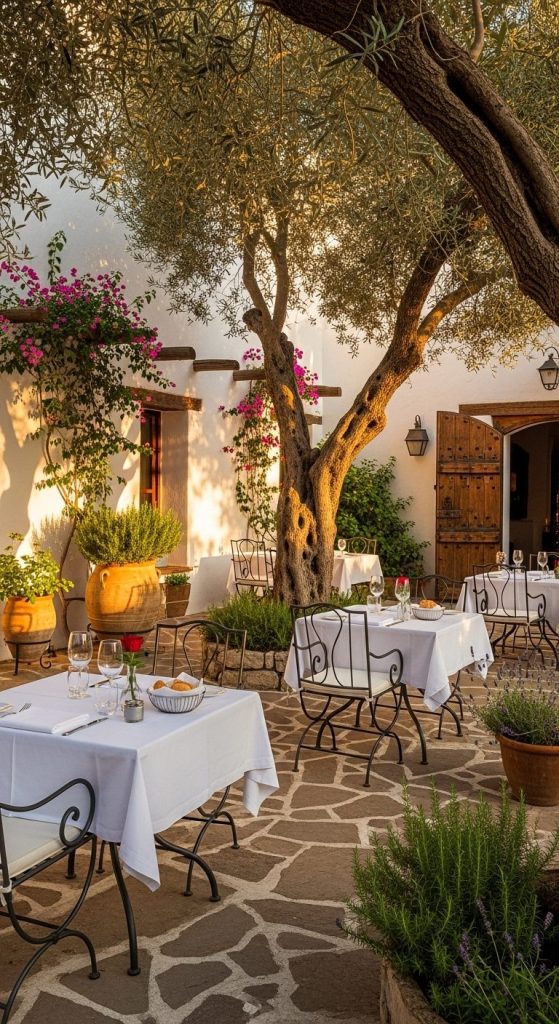
Imagine guests sipping chilled rosé beside olive trees, whitewashed walls, and terracotta pots brimming with rosemary. A Mediterranean courtyard instantly whispers luxury without trying too hard.
Pros:
- Timeless aesthetic that evokes European summer vacations.
- Works well with neutral architecture — natural stone, stucco, or wood.
- Herbs double as scent and garnish for cocktails.
Cons:
- Hot climates may require shade sails or pergolas to stay comfortable.
Takeaway:
A Mediterranean-style courtyard turns your restaurant into a mini vacation — rustic charm meets upscale comfort, no passport required.
2. Modern Minimalist Garden
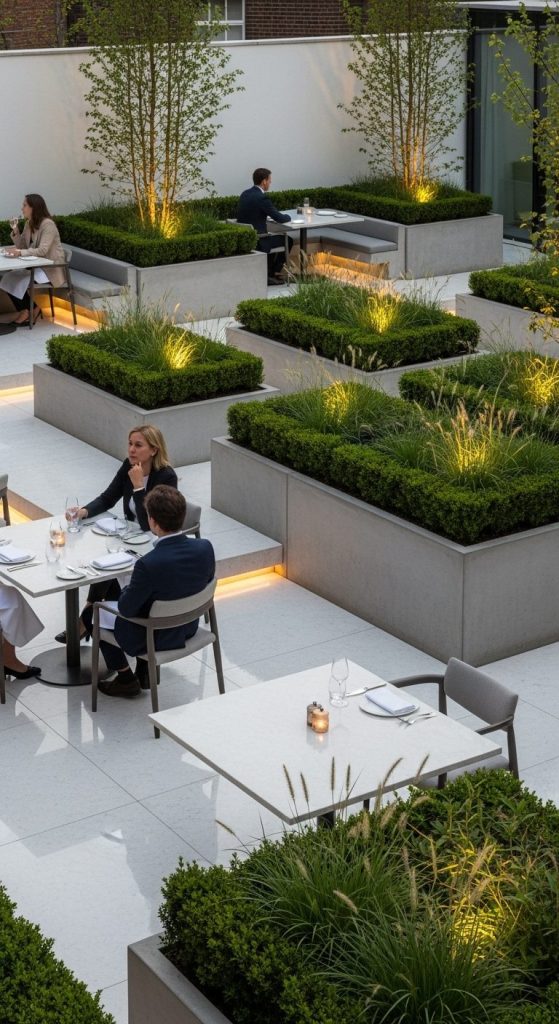
Clean lines, smooth concrete planters, and manicured greenery. The modern minimalist garden thrives on restraint — perfect for fine dining spaces where less is more.
Pros:
- Sleek, photogenic, and fits contemporary architecture.
- Easy to maintain with structured plants like boxwood or ornamental grasses.
- Creates a calm, sophisticated atmosphere.
Cons:
- Can feel sterile without warm lighting or natural textures.
Takeaway:
A minimalist garden proves that elegance often lies in what you leave out. Simplicity amplifies the details — from plating to presentation.
3. Rooftop Garden Escape
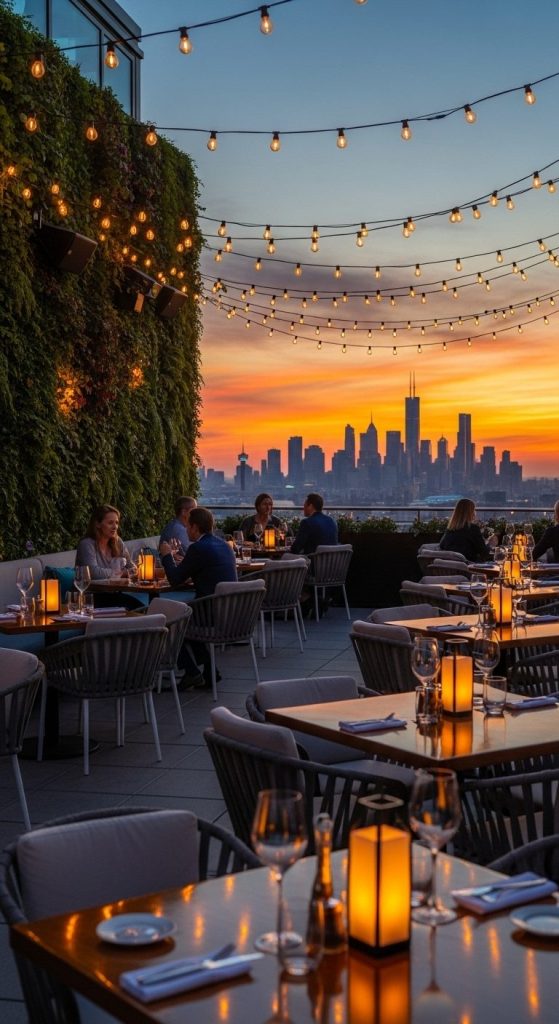
When space is tight, go vertical. A rooftop garden transforms unused airspace into the restaurant’s most coveted seating area. Add soft lighting, greenery walls, and panoramic views — pure magic.
Pros:
- Unbeatable ambience for city dining.
- Expands seating capacity without new construction.
- Great for branding — rooftop photos attract social media buzz.
Cons:
- Requires structural checks and careful irrigation planning.
Takeaway:
A rooftop garden is urban escapism at its best — where skyline meets starlight and guests forget they’re in the middle of the city.
4. Garden Pathway Dining
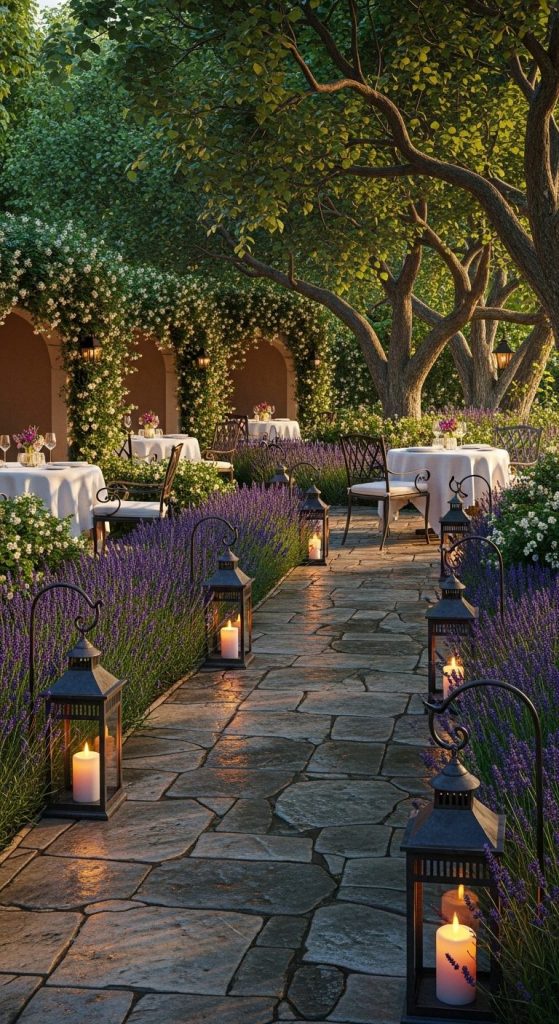
Picture a narrow stone path lined with lanterns and lavender, leading guests to intimate dining nooks. It’s a small design move that transforms the arrival experience into something cinematic.
Pros:
- Adds instant romance and intrigue.
- Encourages flow and discovery through your garden layout.
- Works beautifully with small courtyards or boutique restaurants.
Cons:
- Needs clear sightlines for servers — design shouldn’t impede service.
Takeaway:
The journey to the table matters. A garden pathway turns every dinner into a gentle story that begins the moment guests step in.
5. Sculpture and Art Garden
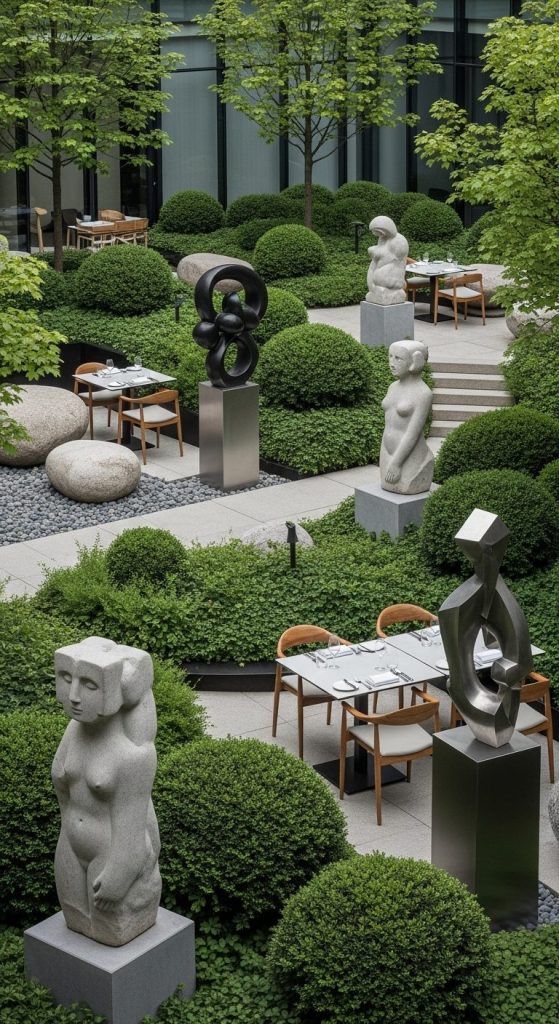
For fine dining, art and nature can share the stage. Integrating sculptures, modern art pieces, or even kinetic installations gives your garden a curated edge that mirrors your culinary artistry.
Pros:
- Builds a strong brand identity — art meets atmosphere.
- Encourages guest engagement and photography.
- Year-round visual interest even when plants are dormant.
Cons:
- Requires thoughtful curation to match the restaurant’s tone.
Takeaway:
Let your garden tell a visual story. Art installations elevate the experience from beautiful to memorable.
6. Candlelit Courtyard
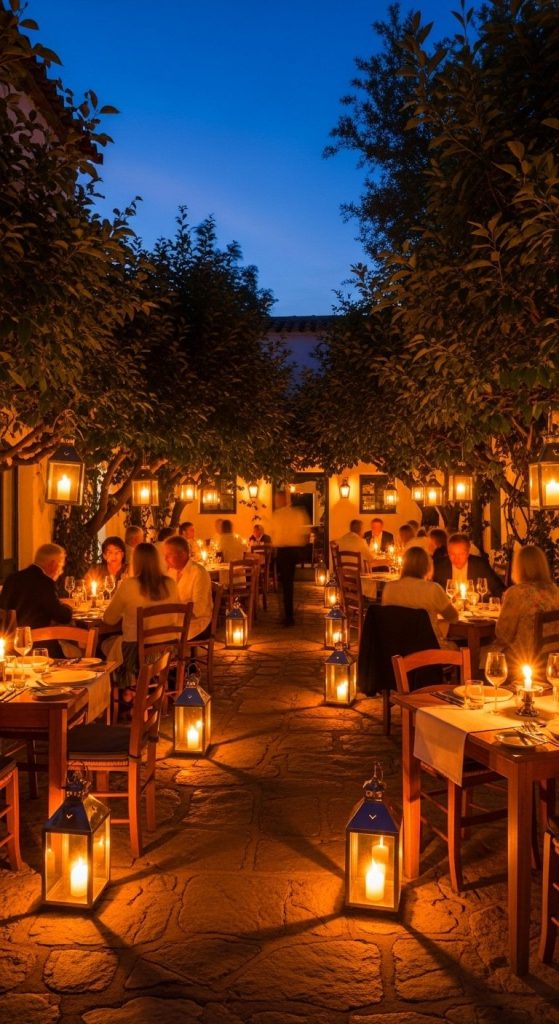
If there’s one thing every guest remembers, it’s the lighting. Candlelit courtyards feel like stepping into a secret — intimate, warm, and hypnotically beautiful at night.
Pros:
- Inexpensive way to create high-impact ambience.
- Works with any design style — modern, rustic, boho.
- Adds romantic value that drives evening reservations.
Cons:
- Wind or weather can make candles tricky — invest in sheltered glass lanterns.
Takeaway:
Soft candlelight transforms simple spaces into emotional experiences. It’s not just decor — it’s mood architecture.
7. Stone Terrace with Water Feature
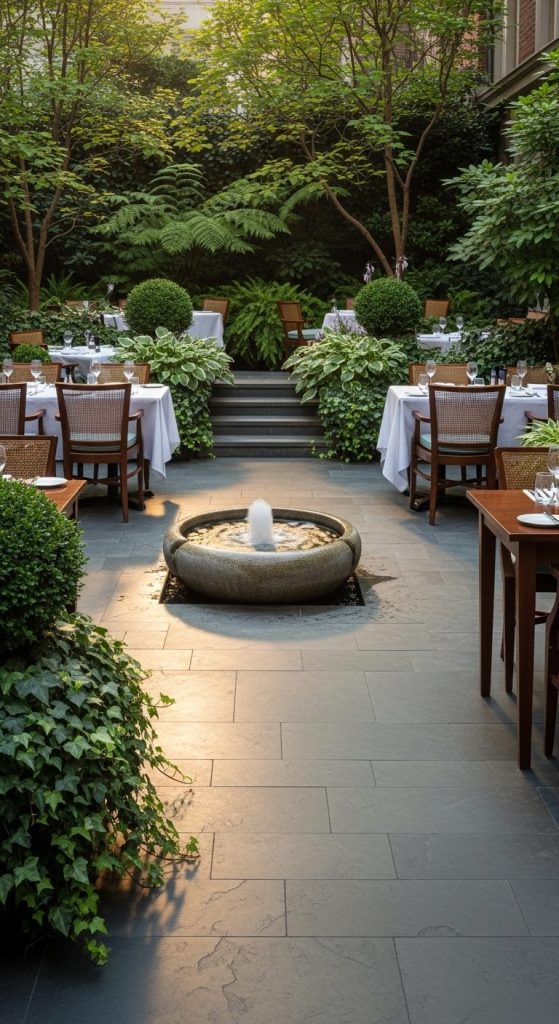
Few things calm guests like the sound of water. A gently bubbling fountain or reflective pond paired with stone flooring adds texture, coolness, and serenity.
Pros:
- Elevates luxury perception instantly.
- Masks urban noise for a peaceful dining experience.
- Offers sensory balance — sound, movement, reflection.
Cons:
- Requires maintenance to prevent algae and clogging.
Takeaway:
Water introduces rhythm to your garden — a quiet pulse that pairs beautifully with wine and conversation.
8. Pergola Dining Under Vines
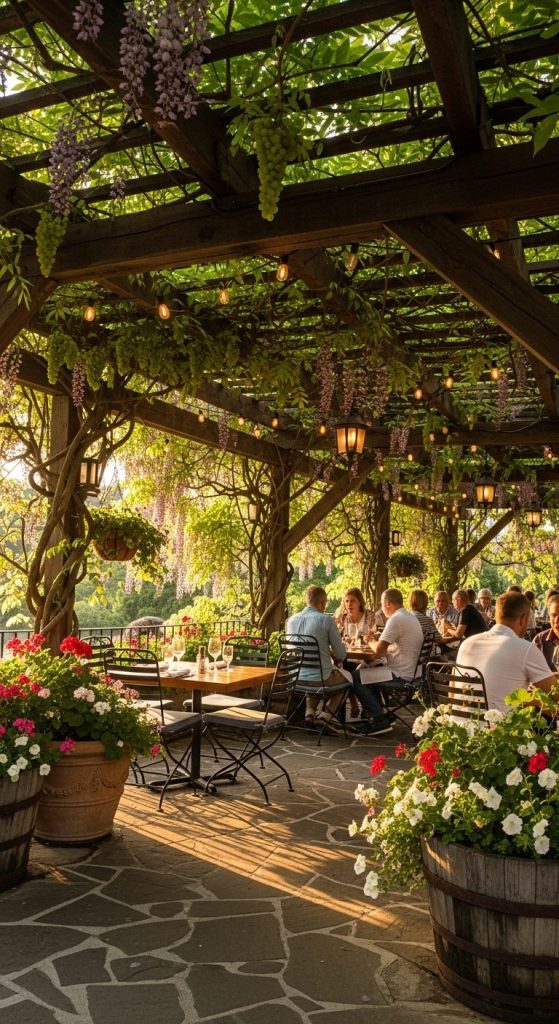
A pergola laced with grapevines, jasmine, or wisteria feels straight out of a romance novel. It’s shaded by day and dreamlike by night when paired with string lights.
Pros:
- Adds vertical structure and seasonal interest.
- Natural cooling and soft lighting enhance comfort.
- Perfect balance of intimacy and openness.
Cons:
- Needs regular pruning and sturdy supports for mature vines.
Takeaway:
Dining beneath living architecture blurs the line between indoors and out — nature becomes your ceiling.
9. Secret Garden Nooks

Luxury doesn’t have to be loud. Tucked-away seating alcoves framed by hedges or trellises create private, personalized dining zones that feel like hidden gems.
Pros:
- Increases perceived exclusivity and guest intimacy.
- Ideal for special occasions or VIP reservations.
- Encourages repeat visits for unique experiences.
Cons:
- Harder to monitor for service staff; use subtle lighting and layout cues.
Takeaway:
The allure of privacy never fades — guests love feeling like they’ve discovered a secret spot just for them.
10. Vertical Green Walls

Perfect for restaurants with limited ground space, green walls deliver lush texture without sacrificing square footage. They’re modern, photogenic, and excellent for acoustics.
Pros:
- Adds color, life, and air-purifying benefits.
- Creates a high-end look even in tight courtyards.
- Provides sound absorption in noisy areas.
Cons:
- Requires reliable irrigation and sunlight planning.
Takeaway:
When in doubt, grow up. Vertical greenery gives small restaurants grand atmosphere.
11. Outdoor Bar with Herb Planters
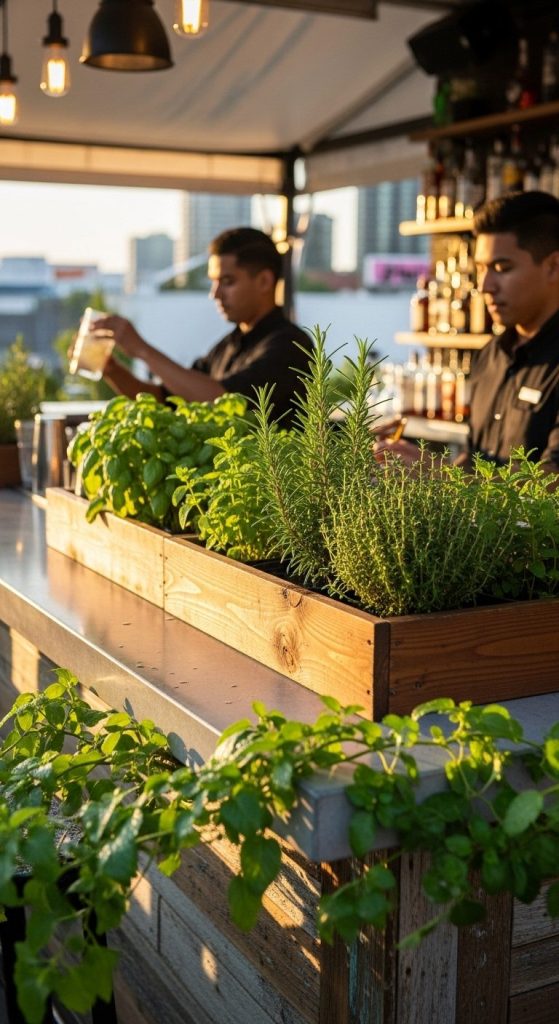
A sleek outdoor bar framed by built-in herb planters feels both functional and fresh. Guests see — and smell — ingredients that go directly into their drinks.
Pros:
- Enhances sensory connection between bar and garden.
- Great conversation starter and Instagram magnet.
- Encourages mixologists’ creativity with on-hand garnishes.
Cons:
- Needs consistent maintenance and sunlight for herbs.
Takeaway:
Drinks taste better in context. An herb-lined bar turns mixology into performance art.
12. Firepit Lounge Garden
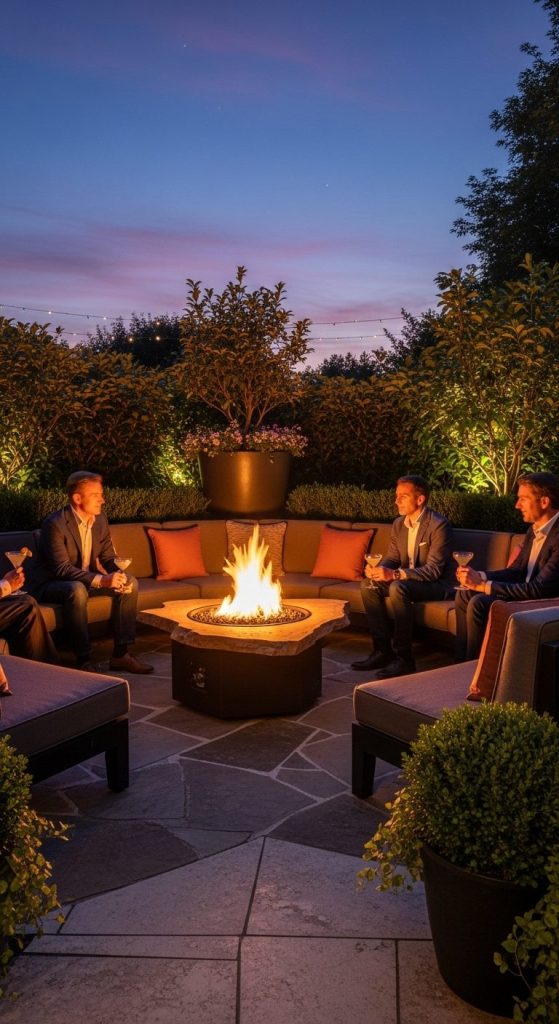
There’s a reason fire draws people in — it’s primal, warm, and social. Add a sculptural firepit surrounded by designer seating, and suddenly you’ve got your restaurant’s most magnetic evening spot.
Pros:
- Extends outdoor dining season into cooler months.
- Creates a cozy, luxurious after-dinner lounge vibe.
- Encourages guests to linger longer (and order dessert).
Cons:
- Fire codes vary — check local regulations first.
Takeaway:
A well-designed fire feature adds both comfort and spectacle. It’s hospitality in its purest, most elemental form.
13. French Bistro Garden

If your restaurant’s charm lies in intimacy and flair, a Parisian-style garden is pure gold. Think bistro chairs, potted boxwoods, and a touch of wrought iron — effortless elegance.
Pros:
- Compact, timeless, and works in almost any setting.
- Instantly recognizable aesthetic with universal appeal.
- Ideal for cafes, brasseries, and boutique fine dining.
Cons:
- Limited space for larger plants or dramatic landscaping.
Takeaway:
A French bistro garden proves small can still feel sumptuous — elegance lives in the details.
14. Evening Glow Lighting Design
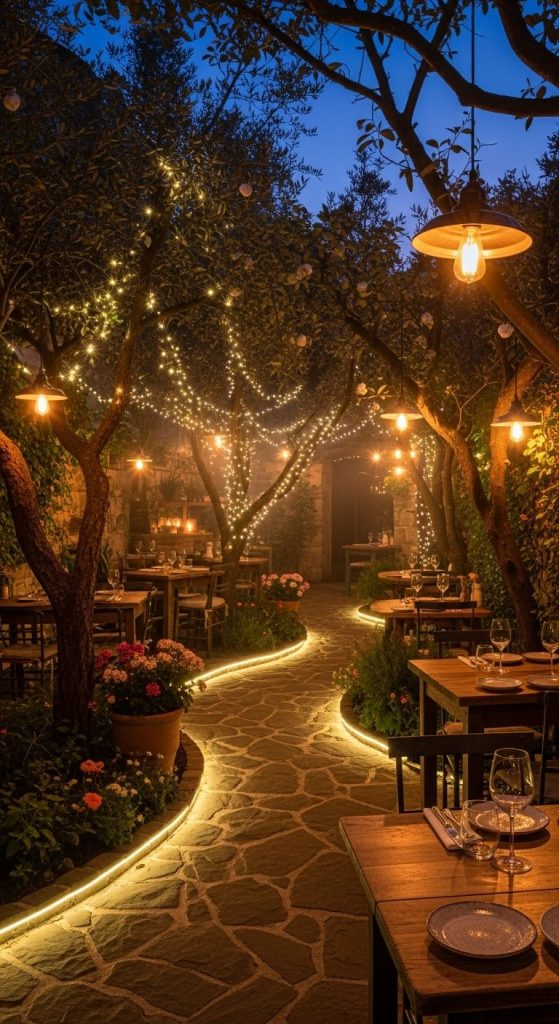
Lighting can make or break the mood. Use layered lighting — fairy lights in trees, hidden LEDs along pathways, and soft pendant fixtures over tables — to sculpt the atmosphere.
Pros:
- Extends usability of the garden into evening hours.
- Defines mood and space without heavy décor.
- Enhances photography for marketing and guest sharing.
Cons:
- Requires professional wiring to avoid safety issues.
Takeaway:
Light isn’t just for seeing — it’s for feeling. Done right, it turns your restaurant garden into a scene guests can’t stop talking about.
15. Luxury Lounge Garden
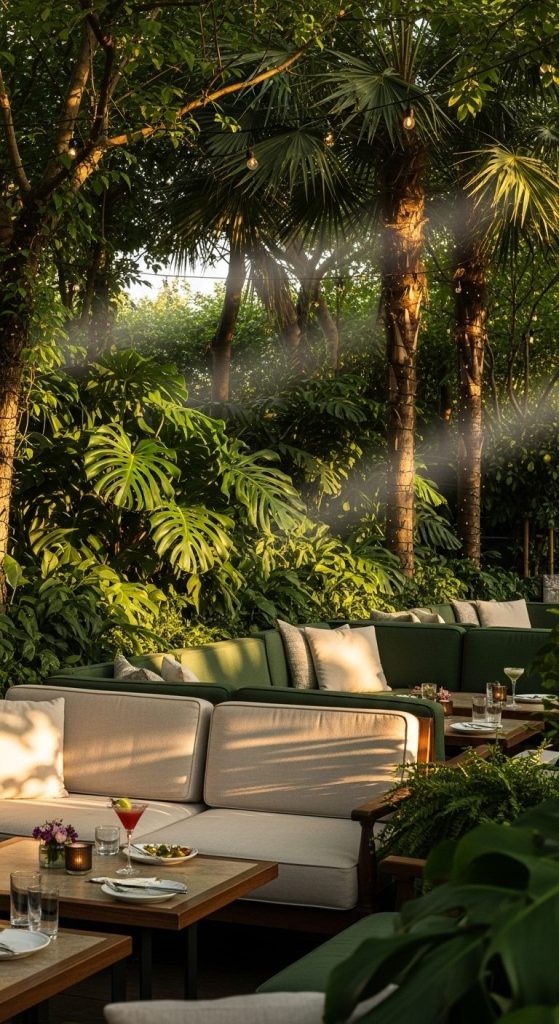
For high-end venues, comfort meets design in a lounge garden — deep sofas, outdoor rugs, ambient music, and lush foliage create a resort-level experience.
Pros:
- Encourages longer stays and high-value spending.
- Reinforces your restaurant’s brand as a lifestyle destination.
- Flexible layout for private events and VIP service.
Cons:
- Requires weatherproof, high-quality furniture investment.
Takeaway:
Luxury today means effortless indulgence. A lounge garden delivers it with style, scent, and a glass of champagne.
Conclusion: Turning Dining into an Experience
Great food satisfies. Great gardens enchant.
Whether your restaurant overlooks a city skyline or wraps around a quiet courtyard, the right garden design transforms dining into storytelling. Every leaf, every light, every shadow contributes to the sensory memory guests take home.
The best restaurant gardens aren’t about excess — they’re about intention. They say, you’re welcome here, take your time, enjoy the moment. IMO, that’s what hospitality is all about.

William Martin is a passionate bowler who spends most of his weekends playing the sport. With years of intense experience under his belt, William decided to share his knowledge by creating BOWLING OCEAN. Join me on this journey to explore the world of bowling and discover the tips and tricks to becoming a pro.



